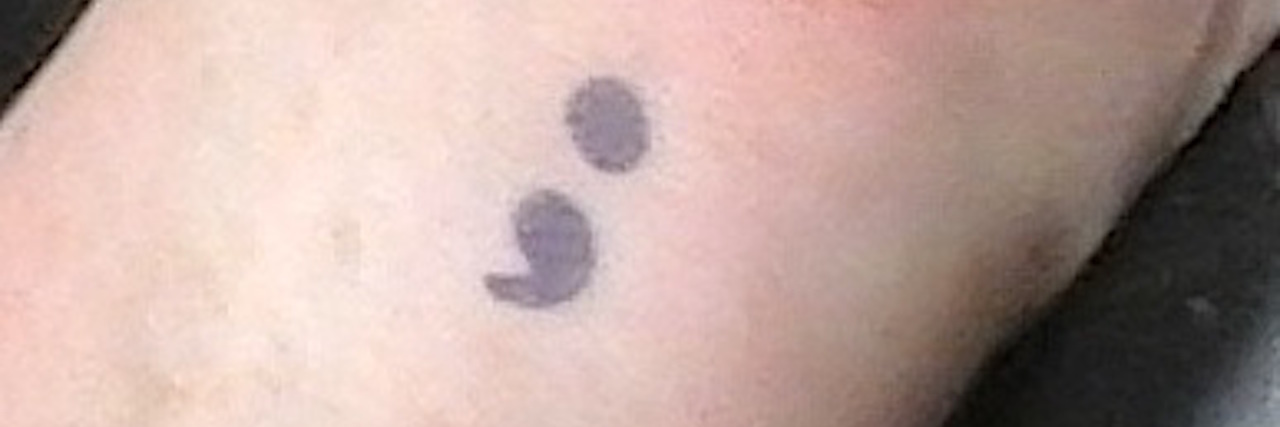How My Tattoos Help Me When I'm Struggling With Bad Thoughts
Sometimes I have bad thoughts. We all do. I find that mine fall into three groups.
The first kind of bad thoughts are when I want to snap or snipe or snark at my husband, despite the fact that he is indispensable to me. He takes care of me, understands me, helps me, hugs me and feeds me in ways I can’t begin to describe.
When those bad thoughts arise, I have a brief internal chat with myself. (It looks like I’m thinking what to say because that’s exactly what I’m doing.) Then I choose not to say the nasty thing or I think of a less nasty way of saying it. The skills involved are impulse control, the use of “I statements,” and the ability to rephrase. I try to say something that will get my point across without hurting or making things worse. These are techniques I have learned over the years, which makes me think they are things that can be developed with a little practice.
Learning to restrain myself has prevented many fights. Some people find this style of communication inauthentic or wishy-washy – that I am tiptoeing around my husband instead of saying what I really think. All I can say to that is it works for me and our marriage.
The next kind of bad thought is the kind that comes with depression: I’m useless. I’m pathetic. I can’t do anything right. I’m worthless. Jenny Lawson talks about these thoughts in her book “Furiously Happy,” and she has one thing to say about them: Depression lies. These are the thoughts of a brain that makes you miserable and sometimes wants to kill you, or at least kill your possibility of happiness.
Fortunately, my husband has read Jenny Lawson too. When I express these bad self-thoughts – and I think it’s best if you have a safe person to tell them to – he reminds me. He doesn’t try to deny the thoughts: You know you’re not worthless. You do lots of things right. He tells me, “That’s depression lying to you.” I used to get stuck in these cycles a lot before I was properly medicated and before I had his help and that of my therapist.
Then there are the really bad thoughts, those of self-harm or worse. Most of the time I don’t have these anymore; but when I do, there is one thing I can do. (Actually, there are more things I can do, but this is one that works for me.) I look at my tattoos.
The one on the right wrist is a symbol for bipolar disorder, made up of punctuation : ) : in the form of a smiley face/frown face. This reminds me that my brain isn’t working right and is sometimes out to get me.
The other is on my left wrist, near my scars from self-harm. It is a semicolon. You may have heard about Project Semicolon or seen the semicolon symbol on T-shirts or jewelry.
The semicolon is my favorite punctuation mark. It comes at the place in a sentence where a writer could choose to put a period and stop; instead, she continues the sentence. The semicolon says, “My story isn’t over,” something you’ll also see on t-shirts and such. (I’m thinking of making that sentence my third tattoo.)
Recently I had a bout of those really bad thoughts. But I looked at my tattoos and told myself, “My story isn’t over yet. I still have things I need to do.” One of them is to tell my story, in my blog and in a book I’m trying to write.
My tattoos helped me get over the bad thoughts. They have paid for themselves many times over. I never regret getting them. They may have saved my life.
We want to hear your story. Become a Mighty contributor here.
Lead image via contributor

